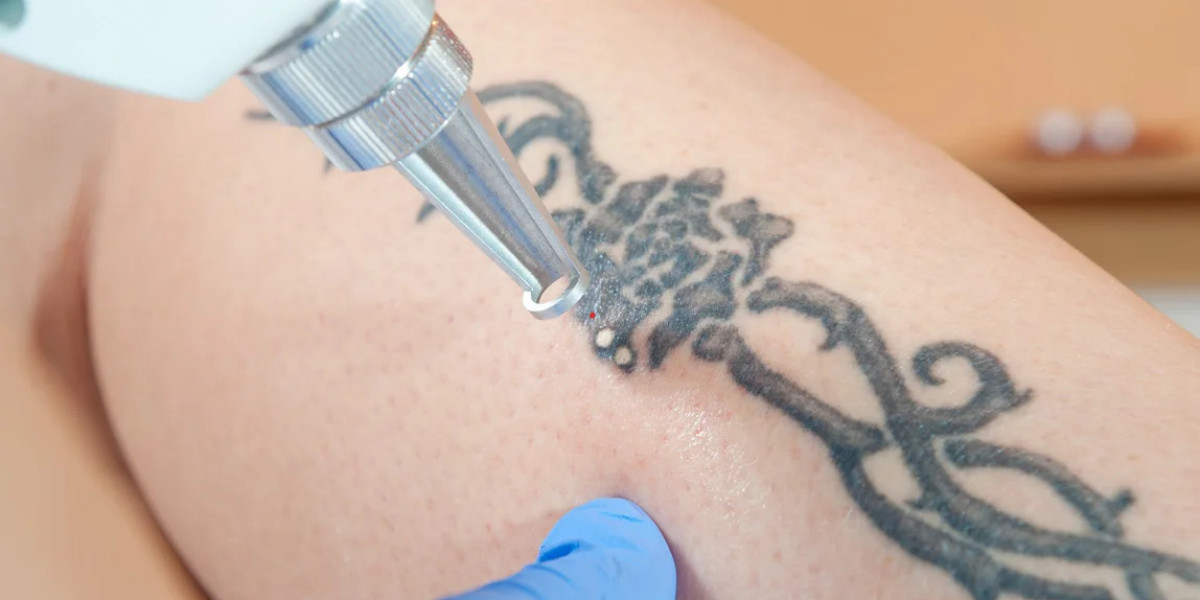Rejuvi tattoo removal has been gaining traction as a non-laser option for those wanting to part ways with their ink. Unlike traditional laser methods, the Rejuvi technique uses a specially formulated chemical extraction solution applied to the tattooed area to lift pigment out of the skin. But with this growing popularity comes increasing discussion — and concern — about potential side effects. Are these risks exaggerated, or is there truth behind the warnings? Let’s explore the realities behind the Rejuvi tattoo removal process.
Understanding How Rejuvi Works:
Before diving into Side effects of Rejuvi tattoo removal (الآثار الجانبية لإزالة الوشم ريجوفي), it's important to grasp how the Rejuvi method functions. The process involves inserting a cream-like removal solution into the skin using tattooing techniques. This solution bonds with the tattoo pigments, forming a scab as the body pushes the mixture and ink out through the skin's surface. This differs from laser removal, which breaks down the ink particles so the immune system can flush them out internally. Because Rejuvi forces ink out through the surface, it can be more aggressive on the skin and lead to distinct healing patterns — and potential complications.
Immediate Side Effects Post-Treatment:
As with any skin-invasive treatment, immediate side effects are to be expected. Redness, swelling, and tenderness around the treated area are common reactions during the first few days. Some individuals may experience pinpoint bleeding or bruising shortly after the session. These symptoms usually subside within a week, but their intensity may vary depending on skin type, sensitivity, and the size of the tattoo being treated. While these effects are not necessarily alarming, they require close monitoring to ensure that no infection develops.
Risk of Scarring and Skin Texture Changes:
One of the most talked-about concerns regarding Rejuvi tattoo removal is the risk of permanent scarring. Because the solution forces pigment and debris out of the skin, it creates a wound-like condition that must heal properly. If aftercare is not followed diligently or if the skin responds poorly, there’s a heightened chance of developing hypertrophic scars or keloids. Even when scarring doesn't occur, some users report a change in the skin’s texture — often described as slightly raised or rough in the previously tattooed area. These outcomes are not guaranteed, but they remain a possibility that candidates should be aware of.
Discoloration and Pigment Issues:
Another frequently reported side effect is skin discoloration. Rejuvi can sometimes lighten not just the tattoo ink but also the surrounding natural skin pigment, leading to hypopigmentation (light patches) or hyperpigmentation (dark patches). These changes can be temporary or permanent depending on how the skin reacts to the solution and how well it heals. Individuals with darker skin tones are typically more prone to pigmentation changes, which can impact the visual outcome of the removal even if the tattoo itself fades successfully.
Risk of Infection and Delayed Healing:
Because Rejuvi involves opening the skin, there is always a risk of infection. The area must be kept clean, dry, and protected during the healing process. Infections can occur if bacteria enter the treated area, leading to pus, increased redness, and prolonged healing time. If untreated, an infection can contribute to further complications like scarring or even systemic issues in rare cases. Furthermore, some individuals experience delayed healing, where scabbing and inflammation persist for several weeks, which may necessitate a longer recovery and postpone follow-up treatments.
Allergic Reactions and Sensitivity:
Although rare, allergic reactions to the Rejuvi solution can occur. Signs of an allergic response may include rash, severe itching, excessive swelling, or burning sensations at the treatment site. Sensitivity reactions might not appear immediately and can sometimes emerge after several sessions. Even those with no known allergies can develop sensitivities due to repeated exposure. For this reason, patch testing is often recommended before committing to a full treatment, although this precaution doesn’t guarantee immunity from future reactions.
The Psychological Side of Healing:
Lastly, it’s essential to consider the emotional impact of potential side effects. Tattoo removal is often pursued for deeply personal reasons — whether it’s erasing a painful memory or clearing the canvas for new artwork. When results are not as expected or complications arise, individuals may experience disappointment, frustration, or anxiety. Scarring or discoloration can replace one aesthetic concern with another, leading to mixed emotions during the healing process. This psychological aspect is often overlooked but is crucial to understanding the full picture of what side effects truly mean.
Conclusion:
Rejuvi tattoo removal presents a unique alternative to laser techniques, offering benefits like fewer sessions and the ability to target colored ink. However, it also comes with its own set of risks — from scarring and discoloration to infection and psychological stress. Are the side effects truth or hype? The answer lies somewhere in between. While many individuals undergo successful removals with minimal complications, the potential for side effects is real and must be seriously considered before proceeding. Understanding these risks and setting realistic expectations can help anyone make a more informed decision on their tattoo removal journey.



